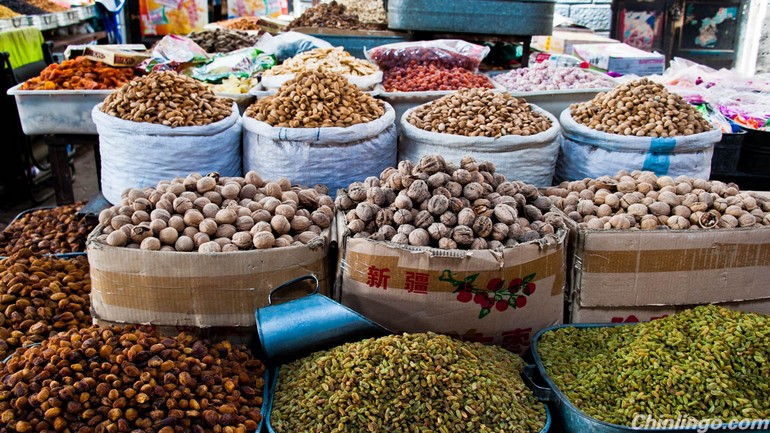
DRIED FRUIT AND PILAF GALORE: LUNCH AT THE BAZAAR
Although I have my eye on a flock of Kashgar's prize fat-tailed sheep, midday is prime time to return to the city and enjoy the bazaar in full Sunday swing. The color and chaos of the crowds, mixed with smoke from the charcoal grills and the scent of meat and spice is intoxicating. Men cluster at the entrance, offering me luscious ripe golden figs—enjur—for one yuan (about 15 cents) apiece. The sweetest figs come from Atash and Beshkirem near Kashgar, and the vendor passes me one on a fig leaf to catch the sticky juices. Nearby, another man carves ruby-colored slices of watermelon with a tapered silver knife. The knife is beautifully crafted, its horn handle inlaid with stones, and I ask him where he found it. He points me to another part of the bazaar, where the knife makers work alongside men beating copper bowls and selling brass water pitchers.
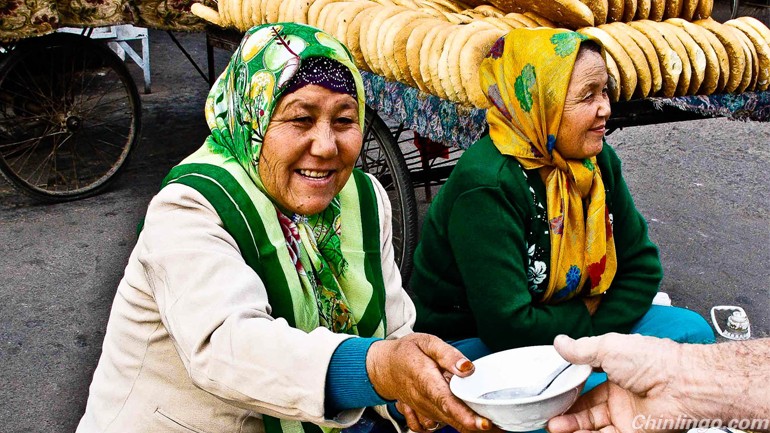
But as much as the animal market is a man's world, the bazaar belongs to women, as they buy and sell colored cloth, bargain over tea, and negotiate the price of dried fruits. There are tubs of the most exquisite dried figs, each the size of a marble. The vendor urges me to try one—it is sweet and chewy with the crunch of tiny seeds. The lush fertility of the oasis and the cool, dry climate makes for some of the world's best dried fruit and nuts—apricots and dates; sultanas in green, purple, and black; raisins, walnuts, and almonds.
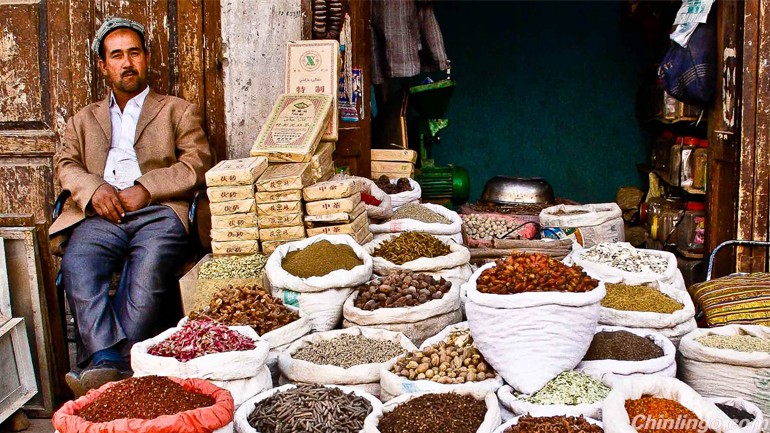
A whole zip code of the bazaar is dedicated to spices, the air thick with the smells of dried chili, cumin, saffron, and cinnamon. Visit any dora dermek shop and ask for a tetitku (a spice mixture). The vendor takes a little of this, a little of that, and hands me a paper cone of dynamite powder packed with flavor. I'll use it for seasoning kebabs, roast lamb, chicken, or vegetables.
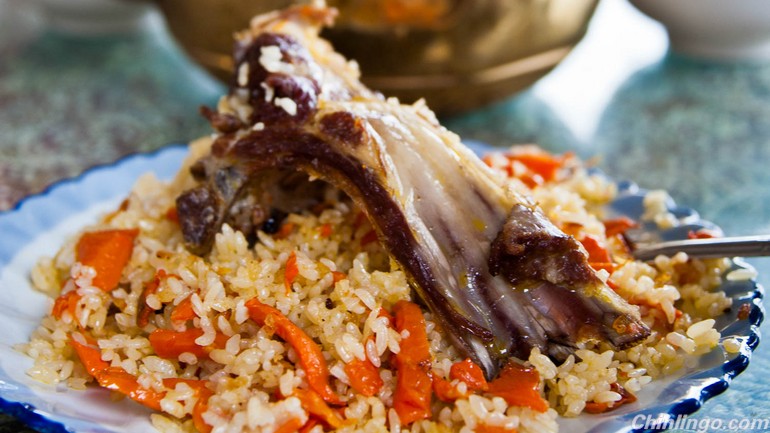
At lunchtime, the bazaar empties into the alleys outside for hot food like saffron lamb: a plate of tender meat, slow-cooked in a yogurt marinade until it falls apart. Or there's mutton polo, a rich and satisfying rice pilaf that cooks in enormous blackened pots, gently warmed by a charcoal brazier. Shreds of carrot and onion cook to a caramelized coating on the bottom of the pot, mixed with buttery rice and mutton on the bone. I sit elbow to elbow on a narrow table with Uyghur women in colorful head scarves, laughing and gossiping, eating and sipping tea.
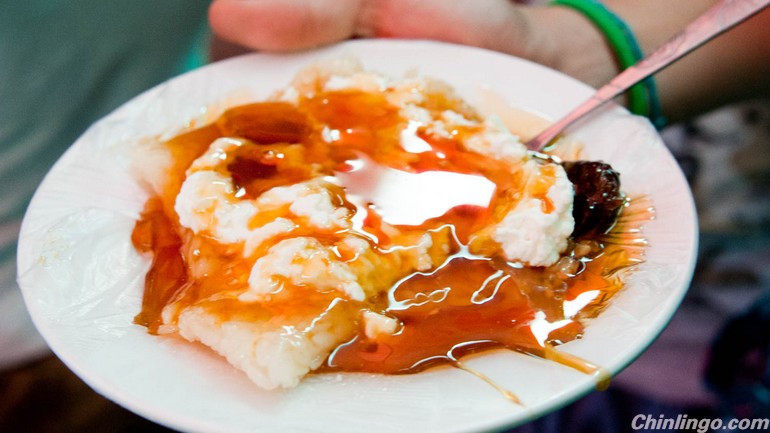
For dessert, everyone returns to the shade of the bazaar where you can eat yogurt mixed with shaved ice, or zongza, a Uyghur take on classic Chinese sticky rice steamed in bamboo leaves. Zongza are made with a sweet red date in the tip, then unwrapped, pressed flat on a saucer, and covered in creamy yogurt curd and drizzled with brown sugar syrup. I buy matang to take home: a giant block of sweet, chewy nutty nougat made with local walnuts or almonds. When I tell the vendor how much I want, he slices off a hunk with a sharp knife and chops it into bite-size pieces.
SMOKE AND SPICE: OLD CITY AND THE NIGHT MARKET
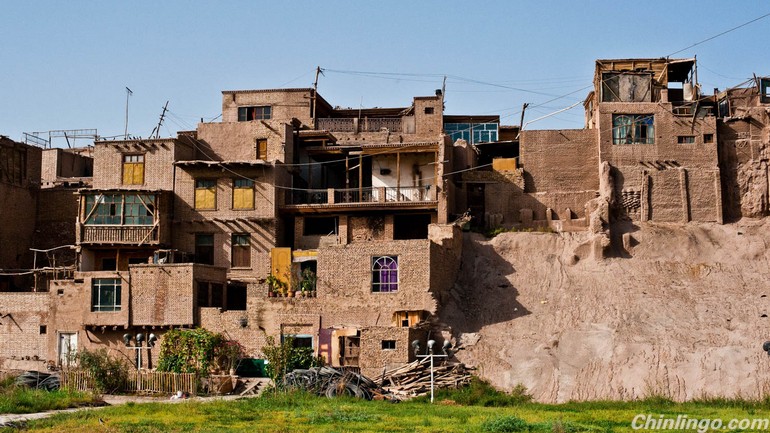
As the midday heat wanes and the afternoon sun lengthens shadows, I wander the Old City. I touch the cool, smooth adobe walls of the quiet alleys, and peek into homes hiding courtyards shaded by trellised grapevines. The maze of the old city is Kashgar's beating heart, or was until the Chinese Government declared it a fire and earthquake hazard and set to rebuilding it in an effort to improve living conditions. UNESCO petitioned for preservation of the Old City in 2009, but development proceeded regardless. Now it's considered by UNESCO officials as "one of the black spots of heritage conservation." Even so, traces of the Old City's magic remain in several dozen preserved homes.
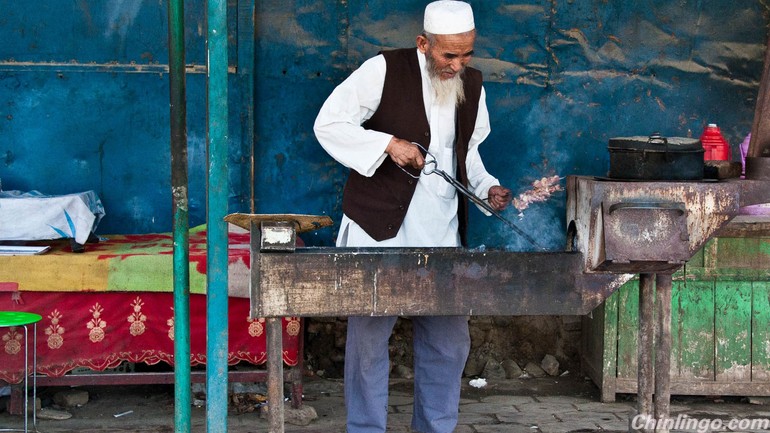
At day's end, as the last call-to-prayer can be heard, I gather my remaining appetite and visit the night market opposite the mosque. The smell of charcoal, spice, and grilling meat is a vivid memory for travelers to Kashgar, with outdoor barbecues smoking on every street corner. Lamb kawap (known to us as kebabs and to the Chinese as yang rou chuanr) have worked their way into the hearts of Chinese people everywhere as Xinjiang's most popular street food export.
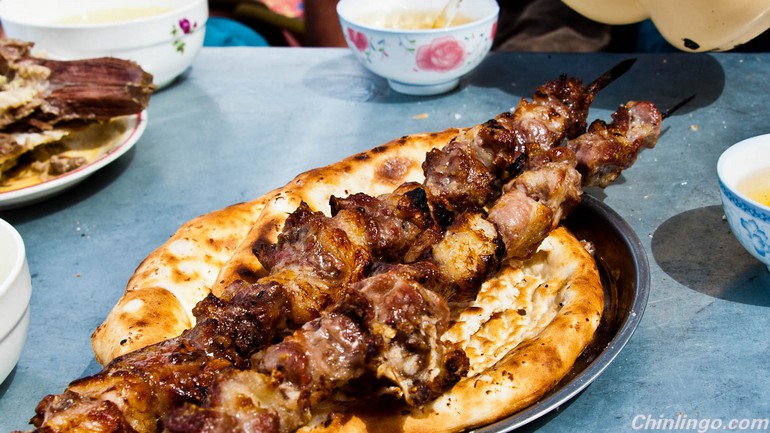
I can't help myself—I gorge on succulent pieces of lamb threaded onto long metal skewers, with juicy chunks of fat in the center to keep the meat tender, and a piece of lamb kidney for flavor. The cook grills the kawap over a waist-high charcoal brazier, fanning the coals with a broad ply fan. As he sprinkles them withziran— that magical mixture of cumin, white pepper, chili, and salt—I know the taste and smell will forever remind me of this night in Kashgar.



 闽公网安备 35020302035673号
闽公网安备 35020302035673号
0 responses on "Colorful and wonderful Xinjiang, China"